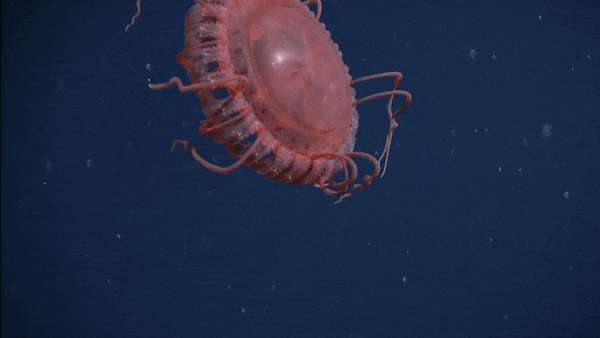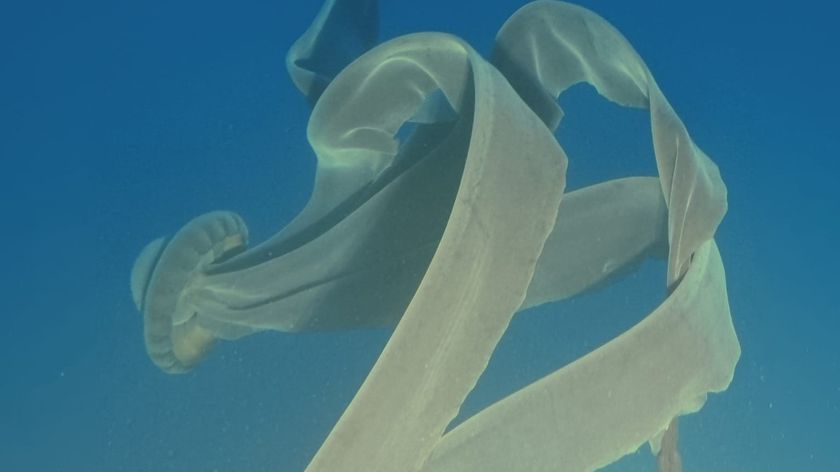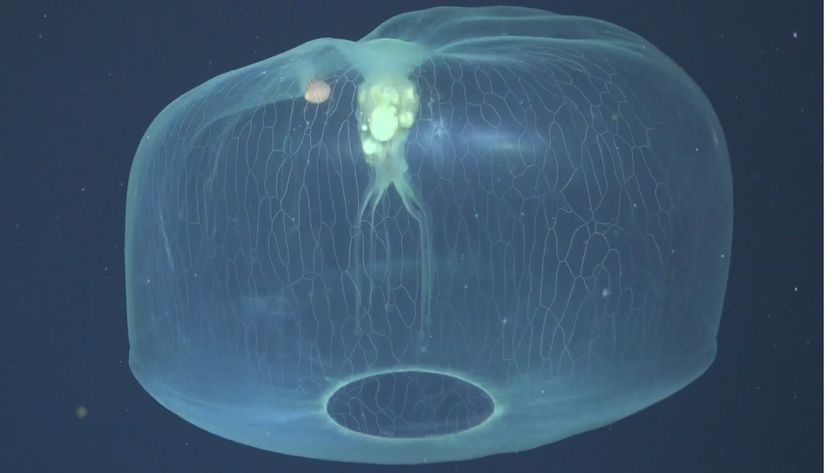Largest crown jellyfish ever discovered is a blood red, saucer-like weirdo
The crown jellyfish A. reynoldsi has between 26 and 39 tentacles.

Scientists have discovered a new species of crown jellyfish that looks like a scarlet alien saucer in the sunless "midnight zone" of California's Monterey Bay.
The newly described species, Atolla reynoldsi, measures about 5 inches (13 centimeters) in diameter and can have anywhere from 26 to 39 tentacles, researchers with the Monterey Bay Aquarium Research Institute (MBARI) said in a statement. Like the 10 other known species of the Atolla genus, A. reynoldsi sports a deep groove running around its central bell, giving its body the appearance of a domed head wearing a frilly red crown.
Though it's not much wider than a dollar bill, A. reynoldsi seems to be the largest of the known species of Atolla jellies, the researchers said. However, what really sets this jelly apart from its cousins is what's missing; unlike all other currently known species of crown jellyfish, A. reynoldsi lacks a single elongate tentacle — one long, thin tentacle that trails behind its body, measuring up to six times the diameter of the jelly's bell.
According to the researchers, a crown jelly uses this extended appendage to help snag prey, which can include crustaceans, siphonophores (rope-like gelatinous animals) and other small creatures that pass through the ocean's midnight zone — the deep, sunless region of the ocean that extends from 3,300 to 13,100 feet (1,000 to 4,000 m) below the water's surface.
While analyzing thousands of hours of footage taken in the Monterey Bay's midnight zone between April 2006 and June 2021, MBARI researchers occasionally spotted crown jellies that lacked the signature trailing tentacle. The team suspected that they had discovered three new crown jelly species in the Bay, but sightings were too rare to prove it.
Now, in a new study published March 16 in the journal Animals, the researchers have conclusively identified one of the unknown jellies as the new species A. reynoldsi. The team studied 10 specimens of the mysterious crown jelly, including both physical specimens and sightings from archival footage, to conclude that the species is "molecularly and morphologically distinct" from all other known species in the genus — that is, it looks different both physically and genetically from its cousins.
A. reynoldsi has so far only been spotted in the Monterey Bay, swimming at depths of 3,323 to 10,463 feet (1,013 to 3,189 m).
Sign up for the Live Science daily newsletter now
Get the world’s most fascinating discoveries delivered straight to your inbox.
"These remarkable new jellies underscore how much we still have to learn about the deep sea," lead study author George Matsumoto, a senior education and research specialist at MBARI, said in the statement. "On just about every dive into the depths of Monterey Bay, we learn something new."
MBARI researchers have identified more than 225 new species over the past 34 years, according to the institute. The two other crown jelly species observed without trailing tentacles may well end up being classified as new Atolla species in the future, the researchers added — however, more observations are still required.
Originally published on Live Science.

Brandon is the space/physics editor at Live Science. His writing has appeared in The Washington Post, Reader's Digest, CBS.com, the Richard Dawkins Foundation website and other outlets. He holds a bachelor's degree in creative writing from the University of Arizona, with minors in journalism and media arts. He enjoys writing most about space, geoscience and the mysteries of the universe.


